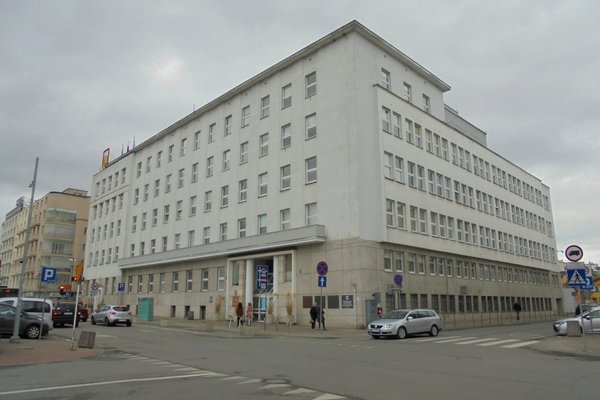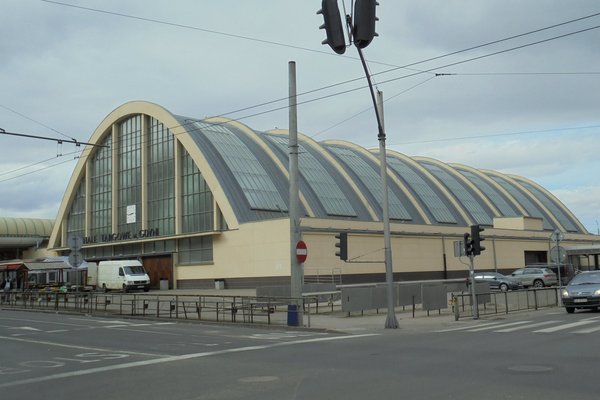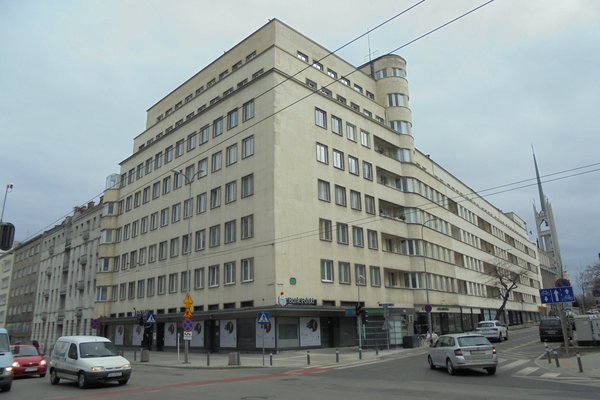Poland
Gdynia
Gdynia, Early Modernist City Centre comprises the city’s modernist urban developments made between 1926 and 1939.
Gdynia was developed from a small town into a port and prime economic hub after World War I by the recently re-established Polish state. The newly designed city combines a traditional urban composition with progressive housing solutions offering light, space and infrastructure for its inhabitants. A large number of buildings from that period have survived.
Community Perspective: Jarek found a coherent ensemble and highlighted several buildings.
Site Info
Official Information
- Full Name
- Gdynia. Early Modernist City Centre (ID: 6431)
- Country
- Poland
- Status
-
Nominated 2026
Site history
History of Gdynia
- 2025: Referred
- Delineation of boundaries
- 2024: Incomplete - not examined
- 2019: Added to Tentative List
- Added to tentative list
- Type
- Cultural
- Criteria
- ii
- iv
Links
- UNESCO
- whc.unesco.org
- Official
-
- modernizmgdyni.pl — Modernism Gdynia
All Links
UNESCO.org
- whc.unesco.org — whc.unesco.org
Official Website
- modernizmgdyni.pl — Modernism Gdynia
Community Information
- Community Category
- Human activity: Urban planning
Travel Information
Recent Connections
News
No news.
Recent Visitors
Visitors of Gdynia
- Adrian Turtschi
- Afshin Iranpour
- Ali Zingstra
- Aspasia
- Bram de Bruin
- Christian Wagner
- Christoph
- Claire Bradshaw
- Clyde
- CugelVance
- Daniel Chazad
- Danieljbromberg
- Dimitar Krastev
- FS
- George Gdanski
- Hadrianus
- henrik_hannfors
- Jakob F.
- James Bowyer
- Jana and Matt
- Jarek Pokrzywnicki
- Jay T
- Jesse S 2010
- Jonoprout
- Kasia M.
- Krzysztof B
- Lisu Marian
- Lucio
- Maciej Gil
- Małgosia Łupicka
- Martina Rúčková
- Mateusz
- Mo-han Je
- Mohboh
- MRZVA
- Nick M
- palka25
- Patrik
- Paul Schofield
- peacemaker2142
- Philipp Peterer
- Piotr Wasil
- Purrfect
- Rafał Kałczuga
- Ralf Regele
- Remigiusz
- rivr
- Roger Ourset
- Roman Bruehwiler
- Roman Raab
- Rudegirl
- Sandmann15
- Sclowitz
- Stanislaw Warwas
- stephanvermeulen
- Szucs Tamas
- Tarquinio_Superbo
- Thorben
- Tom Flaten
- triath
- Tsunami
- Wojciech Fedoruk
- YaroMir
Community Reviews
Show full reviews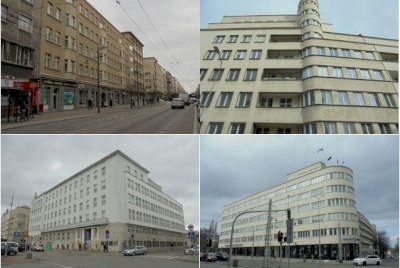
Just visited (April, 2021) or to be specific revisited after several other visits in the past. This time I solely focused my stay on the modernistic aspect of central part of Gdynia. As briefly described in the introduction Gdynia as town has relatively short history that implies its current layout. For many years it was not more than a small fishing village on the shores of Gdańsk Bay (Zatoka Gdańska) but when Poland finally retook its independence in 1918 and after granted limited access to the sea (Baltic) in 1920, Gdynia become a central point of construction process (harbor, infrastructure, the city itself). Hence the results of these building works you can still admire today.
Gdynia center is today protected by establishing so called Monument of History (Pomnik Historii) covering the majority of historical areas. Also many individual buildings are protected in the register of historical monuments. I assume that limits of the tentative site are the same as borders of the Monument of History. It covers the area of 91 ha to the south of Gdynia Harbour. Contains around 450 different buildings. It has regular layout based on 3 different axis: north-south – Świętojańska St (mostly commercial and residential houses) and 2 west-east: series of streets: 10 Lutego St., Kościuszki Sq and Jana Pawła II Ave. and second Starowiejska (the oldest street in Gdynia). See the details on the map.
To find out the best of Gdynia modernistic achievements you can use several routes from https://en.modernizmgdyni.pl/ …
Keep reading 0 comments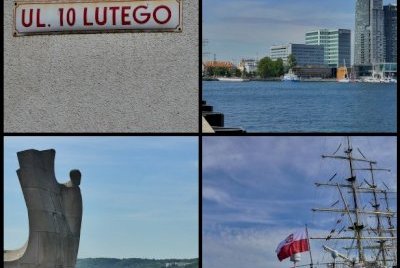
I visited this tentative WHS in August 2020 as a slight detour from the Gdansk tentative WHS and Malbork Castle WHS. If the former two manage to get inscribed Gdansk would become a WHS hotspot.
The Modernist Centre of Gdynia is apparently trying to seek inscription on similar grounds as the Chaux-de-Fonds/Le Locle WHS in Switzerland or the Le Havre WHS in France, i.e. a uniform urban complex developed in the 1920s till present days as a result of a unique and dynamic process of city construction. Gdynia combines features of traditional urban composition (an orthogonal street grid inscribed into the fanned landscape) with buildings that incorporate progressive housing solutions (ensuring access of light and air). The port city's design was based on the idea of opening the city to the Baltic Sea with the Southern Pier serving as a promenade and with general access to open port spaces (a marina, a passenger and short sea shipping harbour). The heart of Gdynia's urban layout can be 'appreciated' mostly by modern architecture/planning enthusiasts by walking along Ludego Street from the railway station to Kosciuszko Square and the Southern Pier.
As a non-enthusiast of modern architecture in general, but judging from other similar WHS or non-WHS I've visited, after visiting Gdynia I can say that no one building stood out and even as a modern urban layout I felt there was nothing unique or any value added gained should Gdynia ever make it on the WH list. Perhaps, Poland would …
Keep reading 0 comments
